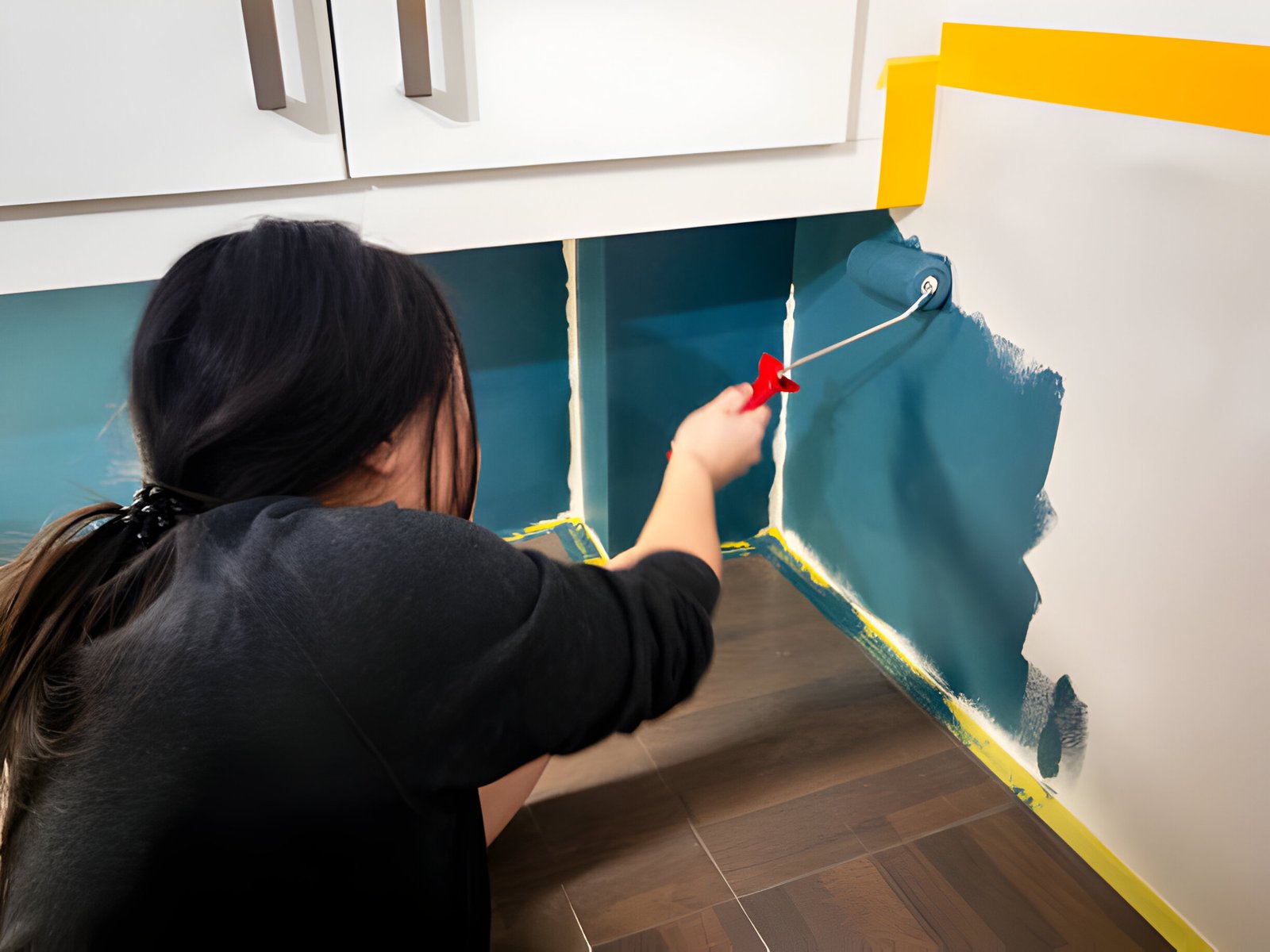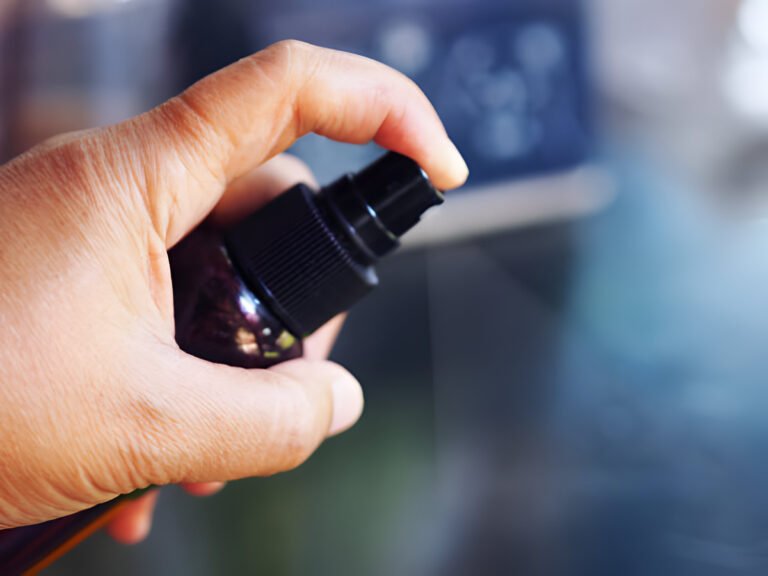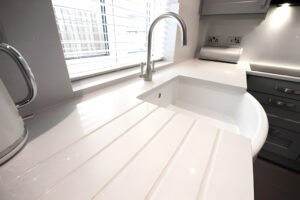Image Credit: Getty image
Choosing the best paint for cabinets can transform your kitchen from ordinary to extraordinary, elevating not just your space’s aesthetics but also its functionality and durability. With a plethora of paint options available, finding the right one for kitchen cabinets requires understanding the balance between ease of application, finish quality, and the longevity of the paint job. The significance of opting for the right cabinet paint cannot be overstressed, as it directly impacts the daily visual and tactile experience of one of the most frequented rooms in any home.
This article delves into the critical aspects of selecting the best paint for refinishing cabinets, emphasizing preparation, primer choice, and the qualities that define the best cabinet paint. Recognizing factors such as brush strokes, self-leveling capabilities, and curing time are paramount in achieving a factory-smooth finish without professional intervention. Following a comprehensive analysis, readers will be introduced to top paint brands, such as Benjamin Moore Advance, renowned for their durability and superior finish, providing a step-by-step guide to painting cabinets. Essential tips for ensuring the longevity and aesthetic appeal of your kitchen cabinets will round off the discussion, empowering homeowners to make informed decisions on the best paint for repainting cabinets for a result that combines beauty with resilience.
Understanding Different Paint Types
Oil-Based Paint
Oil-based paints have long been favored for their durability and superior finish on kitchen cabinets. They are composed of either alkyd (synthetic) or linseed (natural) oils, with alkyd being more common due to its lower cost and tougher finish. One of the main advantages of oil-based paints is their ability to adhere well to wood, creating a smooth, high-gloss finish without visible brush strokes. When dried, these paints form a hard, resistant shell that tolerates significant wear and tear, making them ideal for high-traffic areas. Additionally, they often require fewer coats and fade less over time.
However, there are several drawbacks to using oil-based paints. They contain high levels of volatile organic compounds (VOCs), which emit strong chemical odors during application and drying. This necessitates excellent ventilation and the use of protective gear, such as masks. The drying time for oil-based paints is considerably longer than that of water-based paints, and they are limited in color choices. Cleanup can be challenging, requiring solvents like turpentine or mineral spirits. Over time, oil-based paints may yellow and crack, although they are generally easy to clean.
Water-Based (Latex) Paint
In contrast, water-based or latex paints offer a more environmentally friendly option. These paints are characterized by low VOC levels and minimal odor, making them safer for households, especially those with children and pets. Latex paints are available in a wide range of colors and dry quickly, typically within six hours. They are easy to apply, even on uneven surfaces, and cleanup only requires water and soap, simplifying the process.
Despite these benefits, water-based paints have some limitations. They are generally less durable than oil-based options, making them less suitable for high-traffic areas unless protected with a clear coat. Water-based paints are also more sensitive to temperature and humidity, which can cause the wood to swell and affect the finish. Additionally, they may not achieve the same hard, glossy finish as oil-based paints and often require multiple coats to reach a comparable level of sheen.
Both types of paints have their specific uses and benefits, depending on the needs and conditions of the project. Oil-based paints are best suited for areas requiring a durable, glossy finish and can withstand frequent cleaning. On the other hand, water-based paints are ideal for those seeking a quicker, eco-friendly option with easier cleanup, though they may require more maintenance over time.
Best Paint Brands for Kitchen Cabinets
Sherwin Williams Emerald Urethane Trim Enamel
Sherwin Williams Emerald Urethane Trim Enamel stands out as a top choice for kitchen cabinets due to its exceptional durability and aesthetic finish. Users have noted its superb coverage and smooth application, which minimizes the visibility of brush strokes and resists chipping and peeling. Notably, it levels out nicely as it dries, enhancing the overall smoothness of the finish. Many appreciate the satin finish for its velvety look and feel, which holds up well against daily wear and tear and is easy to clean. Despite its higher price point, the quality and durability it offers make it a worthwhile investment for those seeking a long-lasting, professional-grade finish on their kitchen cabinets.
Benjamin Moore Advance
Benjamin Moore Advance is highly favored for its excellent self-leveling properties, which contribute to a smooth, professional-looking finish. This paint combines the durability of oil-based products with the ease of use and quick drying times of water-based paints, making it an ideal choice for kitchen renovations. It is particularly noted for its ability to handle different types of cleaning agents without losing its sheen or integrity. Although it has a longer drying time compared to some other brands, its overall performance in terms of aesthetics and durability makes it a preferred option for both DIY enthusiasts and professional contractors.
Behr Cabinet Enamel
Behr Cabinet Enamel is specifically formulated for kitchen cabinets, offering excellent adhesion and a durable finish that stands up well to scratches and stains. It provides a good balance of quality and affordability, making it an accessible choice for those looking to refresh their kitchen without a significant financial outlay. The paint is praised for its smooth finish and resistance to common kitchen spills and messes. While it may not have the same hard finish as some higher-end brands, its performance is more than adequate for typical kitchen use and provides a significant improvement over untreated or older painted surfaces.
Step-by-Step Guide to Painting Cabinets
Preparation
Before embarking on the painting process, one must first understand the material of the cabinets, as this will dictate the type of paint and finish to use. For wood or wood veneer cabinets, options are more flexible, whereas metal or laminate surfaces might require specific paints for optimal adherence and finish. Begin by removing all doors and drawer fronts, labeling each piece with painter’s tape to ensure they are returned to their correct positions. It is crucial to empty the cabinets and protect the interiors from paint spills by using tape. All surfaces should be cleaned with a degreasing solution to ensure the paint adheres properly.
Priming
Priming is an essential step in achieving a professional finish. For cabinets in high-moisture areas, consider a primer with mildewcides to prevent mold growth. Depending on the cabinet material, a specific type of primer may be required. For example, oil-based primers are known for their durability, but they contain high VOCs and have a strong odor, necessitating good ventilation and safety gear like masks. Alternatively, acrylic-based or water-based alkyd primers offer reduced VOC exposure. Apply the primer evenly and allow it to dry completely before proceeding.
Painting
Apply the first coat of paint, starting with the cabinet frames and working from the inside out. Use a high-quality brush to reach corners and detailed areas, and a roller for larger, flat surfaces. For a smooth finish, it’s crucial to apply paint in thin, even layers. If painting the interior of the cabinets, begin at the back and move forward. Allow sufficient drying time as recommended by the paint manufacturer before applying additional coats.
Sanding Between Coats
Between each coat of paint, sand the surfaces to remove any imperfections and ensure a smooth base for the next layer. Use fine-grit sandpaper and take care not to remove too much paint. Vacuum up all dust and wipe down the surfaces with a tack cloth to remove any remaining particles. This step is critical for achieving a professional, smooth finish without brush marks or unevenness.
Evaluating the Final Result
After the final coat of paint, inspect the cabinets in natural light and from a distance. This perspective helps identify any areas that may need additional touch-ups or sanding. It is important to address any noticeable imperfections, such as drips or streaks, before the paint fully cures. Once satisfied with the finish, reattach the doors and hardware, ensuring everything aligns correctly and operates smoothly.
By following these detailed steps and using the appropriate materials and techniques, one can successfully paint their kitchen cabinets, achieving a durable and attractive finish that revitalizes the entire space.
Tips for Achieving a Factory-Smooth Finish
Achieving a factory-smooth finish on kitchen cabinets is a meticulous process that requires the right tools, techniques, and patience. Here are detailed tips and considerations for each method and the tools involved.
Sprayer vs Roller Application
When deciding between using a sprayer or a roller, one must consider the specific needs of their project. Sprayers offer an even and consistent finish, making them ideal for large areas or intricate details. They atomize the paint, allowing for a uniform coat. However, they require more extensive setup and cleanup and may not be suitable for beginners due to the skill required to operate them effectively. Rollers, on the other hand, are easier to handle and cost-effective, providing good coverage and a smooth finish when used with the right techniques, such as cross-hatching.
Choosing the Right Tools
The choice of tools significantly impacts the final finish. High-quality tools can enhance the smoothness and consistency of the paint application. For rollers, a high-density foam roller is recommended for smooth surfaces, while a microfiber roller better suits textured surfaces. When using a paintbrush, select one with soft bristles, like the Purdy brush, which is handcrafted to help achieve an ultra-smooth finish. For sprayers, consider investing in a professional-grade model like the Graco battery-powered spray gun, which does not require thinning the paint and offers portability, although it is heavier due to the battery.
Additional Coatings and Finishes
To further enhance the durability and appearance of the painted cabinets, consider applying additional coatings or finishes. Clear topcoats, such as lacquers or varnishes, can fill in minor imperfections and provide a glossy, protective layer. Specialty finishes, like enamels or epoxies, create a high-gloss look and are particularly useful for areas exposed to heavy wear. These finishes may need extra preparation and careful application to achieve the best results.
By understanding the advantages of each application method and selecting the appropriate tools and finishes, one can significantly improve the outcome of their cabinet painting project. The key is to prepare thoroughly and follow each step diligently to ensure a professional-grade finish that lasts.
Conclusion
Through the exploration of various paint types and brands, the significance of choosing the right paint for kitchen cabinets has been underscored, highlighting how such a decision can elevate both the aesthetics and functionality of one’s kitchen space. The comparative analysis between oil-based and water-based paints, alongside recommendations from top brands like Sherwin Williams, Benjamin Moore, and Behr, serves as a comprehensive guide for homeowners looking to undertake a kitchen transformation. This guidance ensures that readers are well-equipped with the knowledge to select paints that offer the best in durability, finish quality, and ease of application, thereby achieving a professional-grade outcome without the necessity of professional intervention.
Moreover, the step-by-step guide and ensuing tips provided for achieving a factory-smooth finish reiterate the importance of meticulous preparation, the right tools, and patience in the painting process. Whether opting for the efficiency and environmental friendliness of water-based paints or the durability and glossy finish of oil-based options, the article emphasizes the transformative power of a well-executed cabinet paint job. As readers consider embarking on their kitchen renovation projects, this article serves as a reminder of the significant impact that careful planning, product choice, and application technique can have on the final outcome, encouraging further research or professional consultation for those seeking to ensure the lasting beauty and resilience of their kitchen cabinets.
FAQs
What is the recommended type of paint for kitchen cabinets?
Special cabinet paints are ideal as they offer a smooth finish. However, any high-quality paint can be effective if it is acrylic-based. Acrylic latex-based paints are recommended due to their durability and ease of cleanup. It’s important to adhere to the manufacturer’s instructions regarding the cure time for latex paints.
What type of paint do professional painters prefer for kitchen cabinets?
Professional painters often opt for professional-grade lacquer due to its smooth, silky finish. This type of paint is commonly used by cabinet manufacturers and is considered the best option for cabinets. Additionally, there are high-quality water-based paints that are also preferred by professionals.
How can I upgrade the look of my kitchen cabinets?
There are several ways to transform your kitchen cabinets including:
- Refacing your kitchen cabinets.
- Applying a fresh stain.
- Adding a new color.
- Combining two-toned colors.
- Updating the cabinet hardware.
- Enhancing the functionality and appearance of your cabinet doors.
- Installing open shelving.
- Replacing solid doors with glass panes.
What type of paint does Joanna Gaines recommend for cabinets?
Joanna Gaines recommends using Magnolia Home Cabinet Paint for kitchen and bathroom cabinets, as well as for trims, window frames, and doors. This paint is a water-based acrylic product that combines the durability of traditional oil-based paints with the benefits of a modern acrylic formula.



























+ There are no comments
Add yours